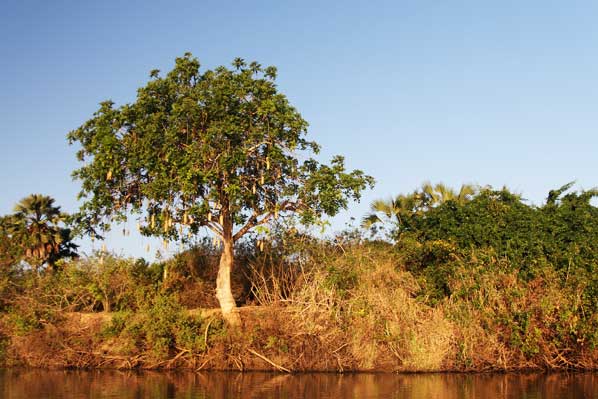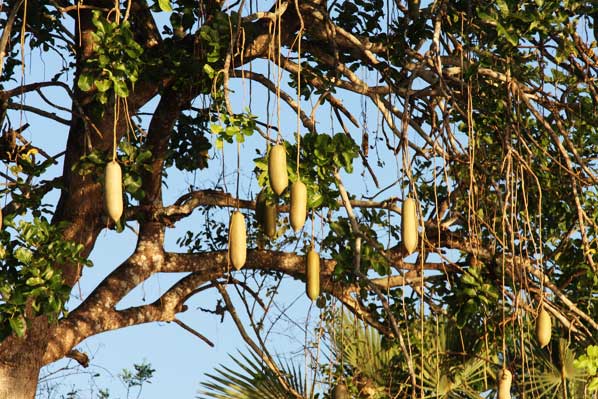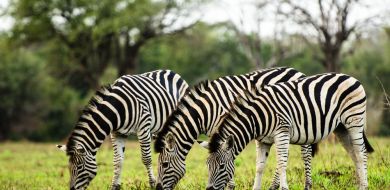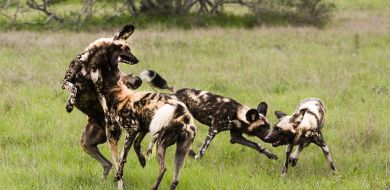Sabi Sabi Wild Facts: Sausage Tree
on Dec 14, 2014Around the world, one of the showiest families of flowering trees, vines and shrubs is the Bignonia family, (Bignoniaceae). Some of the most recognizable and beautiful of these are the Jacaranda, Cape Honeysuckle and Calabash Tree. The genus Kigelia Africana (sometimes also called Kigelia Pinnata) is part of the same bignonia family, and has the Sausage Tree as its only species.
This tree, which can reach a height of as much as 20 meters, grows in the tropical and wet savannah regions of sub-Saharan Africa and is found close to rivers or streams. Where there is year round rainfall, it can remain evergreen, however, in areas with dry seasons, it is deciduous. There is a remarkable variety of names for the Sausage Tree. The genus name Kigelia Africana is derived from the words kigeli-keia, its name in one of the African languages spoken in Mozambique. The common name is self-explanatory, the fruit looks just like an enormous sausage. Its Arabic name, abushutor, when literally translated, means "the father of kit bags." Another of its African names Moporoto, translates as a fat tail of a sheep. In Afrikaans it is called a Worsboom.

The bell-shaped flowers of the Sausage Tree are a beautiful deep red/maroon colour, hanging on elongated, flexible stems. They are very long lasting, and can remain in bloom for up to two months. This makes the species a popular exotic choice for large, landscaped gardens in suitable climates. The scent of the flowers can be smelt most powerfully at night. It is fairly unpleasant to people, but it is very attractive to bats, which are the main pollinators of this species. Once the flowers drop to the ground, they are consumed by many types of animals.
The fruit of the tree is the so-called sausage. It is enormous, up to 100cms long and 10kgs in weight and is eaten by baboons, monkeys, porcupines, birds etc. The leaves of the tree are also eaten by several bushveld herbivores such as elephant and kudu, and are used in parts of Africa as fodder for domestic livestock. The fruit is quite pulpy and fibrous, and is filled with seeds which are spread in the animal dung.

Sausage Tree wood is extremely useful. It is exceptionally strong, water-resistant, and doesn't crack easily. It is used to make ox-yolks, canoes and oars. In areas such as the Okavango Delta, traditional mokoros carved from the straight trunks of the trees are used to navigate the shallow waterways. The "canoeist" stands in the boat, and pushes it along with a pole
In some African tribes, the Kigelia Africana is worshipped as a holy tree. Village indabas (important meetings) are held at its base, and relics carved from the wood are revered. Masaai girls carry dolls made from the pods. In the Ndebele tribe, if a family member dies far from home, a Sausage Tree fruit will be buried in place of the body. The tree is also believed to contain powerful medicine to ward away evil-spirits. For eons the Sausage Tree has been the centre of African myths, legends, healing and sustenance - its imposing size, glorious flowers and strange fruits enriching the environment wherever it grows.






